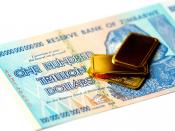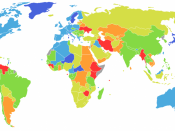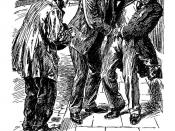INFLATION
Types of Inflation:
1)Demand Pull (Demand Inflation):
* Occurs when there is too much spending in the economy. Sometimes described as 'too many dollars chasing too few goods'. When the amounts of money buyers of G&S want to spend increases more rapidly than the supply of G&S, then prices will be bid or 'pulled' upwards. Demand Inflation is more likely to occur when the economy is close to full employment, when pressure on resources allows their price to be bid upwards (demand for them exceeds supply).
2)Cost Push (Cost Inflation):
* Occurs when increasing costs of production are passed on to consumers in the form of higher prices.
Causes for this include:
÷Increased Wages
÷Higher import prices for raw materials
÷Increased Govt. taxes
÷Rising Interest rates.
Cost increases push up the general price level as businesses pass on the increases to their customers. Cost inflation can occur independently of the level of aggregate expenditure.
Usually, it is impossible to identify a period of inflation as having been caused by demand pull or cost push factors. It's more likely that a combination of the two has been at work.
Effects of inflation:
Inflation effects both the potential size of the economic cake (output effects) and the way in which the cake is distributed amongst the members if the community (redistribution effects).
Persistent inflation tends to lower business confidence and the certainty of future decisions. This can contribute to higher unemployment and to lower economic growth, because firms are uncertain about future costs and their level of profit.
Inflation can affect an economy's competitive position in relation to other nations.
-If Australian economy rises faster than in other countries, Australian goods become less competitive on world markets.
-At the same time, imports become cheaper than domestic products so import-competing industries...



Inflation....
Brief and to-the-point...
while there is room for improvement, in terms of research and depth...
This paper does provide a fair overview of inflation in a nutshell...
A good starting point for research on this topic...
Fair Job...
3 out of 3 people found this comment useful.